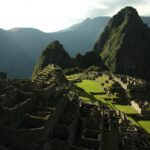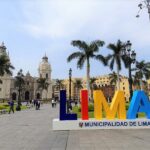Are you going to be in Cusco and are planning to visit the stunning Manu National Park? The first part of this post is about how to get to the Manu National Park from Cusco. The second part is about my experience doing it by myself without a tour, and why I recommend you to take a tour!
Are you planning a trip to Manu National Park?
Check out some of the best tours:
Best tours to the “buffer zone”:
4-day tour at Manu (great overview of the park, highly-rated)
Another 4-day tour (also great reviews, they cater for vegans as well)
Best tour to the “reserved area”:
Manu National Park 6 days (you go much deeper into the park)
Birdwatching tours:
4-day birdwatching tour at the buffer zone
7-day birdwatching tour inside the reserved area
How to get to the Manu National Park from Cusco
Getting to the bus stop to Manu National Park in Cusco
To get to the Manu National Park, you should first head to “Control – San Jerónimo”, which is located in the south of Cusco city. The specific place you want to go to is the “Paradero Control” (Control bus stop). You search for it on Google maps.
To get there, the easiest way is to take a taxi, which will cost you 20 soles or more from the main square. The ride is about 25-30 minutes long. You can also get there by public transport, by taking one of the micros that run in the city center. Ask around to see which one you should take.

Once you get there, you will see a sculpture of a lion. It is from one of the streets adjacent to the sculpture, that the minivans depart towards Manu.
Take a minivan to Pillcopata or Salvación (in the Manu National Park)
The minivans depart twice a day, at 10:30am and at 4pm. To get better views and enjoy more the ride, I recommend you taking a morning van.
Take a minivan that will take you directly to Pillcopata or Salvación towns. The journey to Pillcopata is 9 hours long and to Salvación is around 10 hours long.
In your journey from Cusco, before getting to Pillcopata, you will stop in Paucartambo town. The minivans stop at the river and right next to the market, so you can have a simple lunch there.
Pillcopata is already inside the cultural area of the Manu National Park (also called the buffer zone), so you could stay at a lodge there. You can hike in the nature and bathe in the river, or take a taxi to the Atalaya area and take a boat ride around the river. Pillcopata it’s not very deep in the jungle though, since the cultural area is the inhabited area of the park, where you anyone can enter.
Ideally, I recommend you to visit the reserved area of the Manu National Park, which is were you can see all the big animals and giant trees. Only jungle tribes can live there. But you are only allowed to enter with a tour agency.
So I recommend you go further. Take a bus to Salvación and from there continue your journey. If you go by yourself you won’t be able to enter the reserved area, but you can still get very close to it.
Or otherwise, spend a day in Pillcopata and then continue further to Salvación.
By the time you get to Salvación it will already be late, so you will have to spend the night at a guesthouse there.
Going further into the jungle
You can spend the next day in Salvación. You can visit the small Machuwasi lake, walk along the nearby trails, and get to know the people that visit in the village. It’s also a great place for birdwatching.
From there, you can take a bus to Shintuya, another close by town. You can also stay there, and if you are lucky and there’s no rain, you can visit a macaw clay lick. You will need the help of a local to guide you.
From Shintuya, you can either take a bus or a boat to Itahuania, which is a very small village in the middle of the jungle, where a local tribe lives. The boat takes a couple of hours to get there, with beautiful jungle views.
The ride is not cheap though, so you will have to negotiate (we were asked 200 soles per person, then another boat took us for 70 soles each).
My Experience Getting to the Manu National Park from Cusco
Ok, so that was the first part. Now, I’ll tell you about my experience doing this itinerary.
How I got to the Manu National Park from Cusco
I’m Peruvian and I had been many times to the jungle, but the Manu National Park was still on my bucket list.
Generally tourists opt for guided tours, but on a trip to Cusco with with my partner and two other friends, we decided to venture off the beaten path and explore the Manu National Park in our own way.
When we were in Cusco, a fellow traveler gave us a tip about a very small local community at Manu that she had visited. It was a trip of many hours by boat and we thought. So we though, why not?
The first step, she told us was to contact the community so that they knew we were going to visit them, and could prepare food and accommodation. But, of course, how do you contact a community that lives in the middle of Manu National Park?
The only way was to contact the community in the Manu National Park via radio from Cusco, which we did with the help of the locals in the village in Cusco that we were in at the time. You can already get an idea of how remote park is!
To get to the Manu National Park from Cusco, we started by taking public transport to Salvación (a very small town that is the capital of Manu).
The journey was very long. It’s supposed to be around 10 hours but it was probably a couple of hours longer. The stop at Paucartambo was nice, though. We had lunch there and we also each bought a blanket at the market. The van ride was quite cold as we passed between the highlands and the cloud forest.
Reaching the cultural area of Manu
Our minivan left us at Pillcopata. We quickly had something to eat before the bus to Salvación passed by.
We spent the night at Salvación at a very simple guesthouse, and bought some food to carry with us for the next days.
The next morning, we took a bus to Shintuya, which was the last town where was possible to get by public transport. Or so they told us, because we later found out that we could have continued further. But who knows, maybe it was because there was no public transport going at that moment and we would have had to wait for several hours.
From there, we boarded a peque peque, which is a very thin and narrow boat used in the Peruvian jungle, to continue our journey. We spent a very peaceful couple of hours navigating the river with the sounds of the Amazon surrounding us.
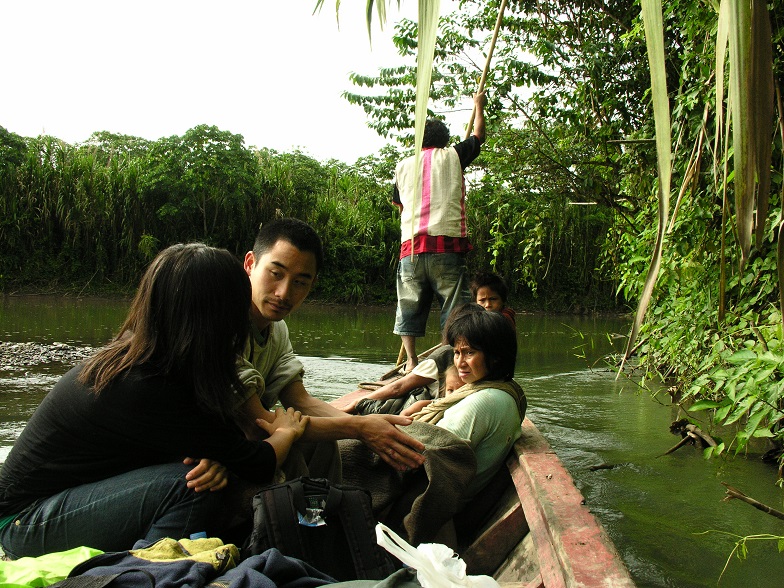
Stranded in the middle of the jungle
However, after some hours, we found ourselves stranded in the middle of nowhere when the boat unexpectedly stopped. The skipper didn’t want to continue further upstream because he was spending too much petrol. The rest of the passengers had already disembarked in the small communities along the way, so we were the only passengers left and he thought it wasn’t worth it for him.
Yes… he simply left us. It was however at a spot where some locals were logging trees at the shore of the river. The skipper said a boat would surely pass by in a couple of hours, that we should just wait.
The loggers told us that there was a village a 30-minute walk away, Itahuania. Two of us went to explore. It was a tiny village in the middle of the jungle. We talked to the locals and they accepted to rent us a room in a hut.
Unfortunately by the time we got back to the camp to let our friends know, it was very dark. We had no flashlights, and we almost got lost on the way back. Since no one wanted to walk in the middle of the jungle at night and encounter a jaguar or get lost, we decided to stay at the camp. Luckily, the friendly loggers let us sleep in their tents.
We spent the next day just waiting in front of the river for a boat to pass. Before it got dark, we returned to Itahuania, this time with our backpacks, so that we could actually get to spend that night to the rooms they were going to rent us.
But unfortunately, the villager that had agreed to rent us a room was upset at us for not showing up the night before. He had been waiting for us. So, he (and the rest of the villaggers), refused to rent us anything for that night.
We went back to sleep at the camp with the loggers.
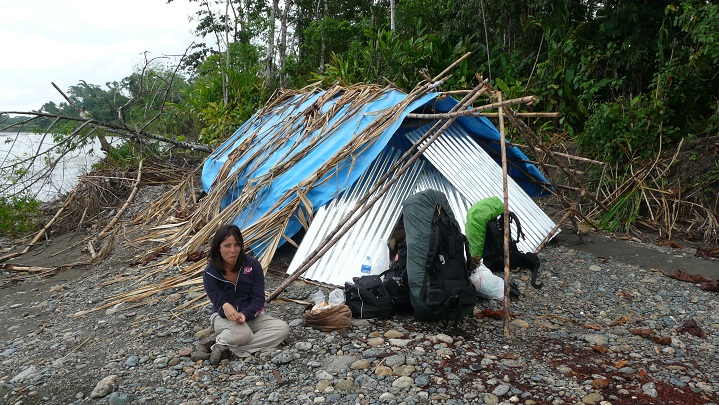
Finally we arrived
Eventually, the day after, another boat passed by and we were able to continue our journey.
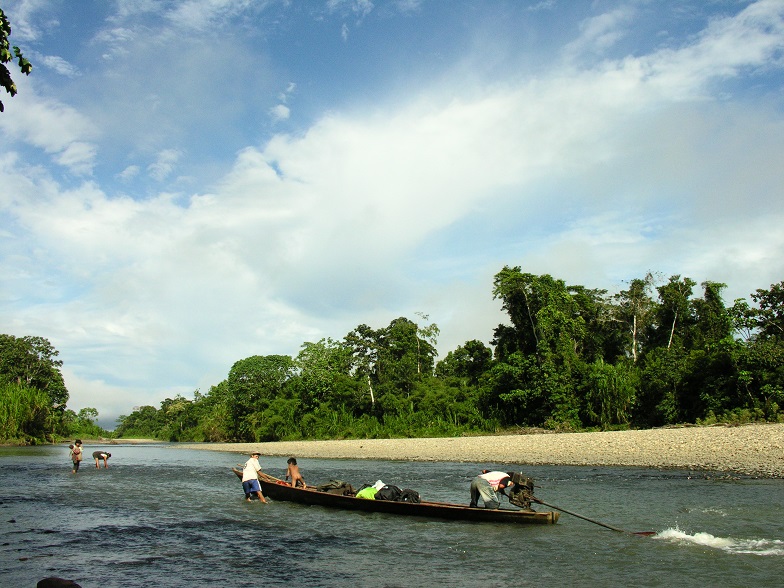
Finally we arrived at our destination. The community (which was actually just one family!) were eagerly waiting for us and we stayed at a small lodge that they had set up for visitors with the help of an NGO. They actually didn’t receive many visitors, as we could see in their guest log. There were months without a single visit.
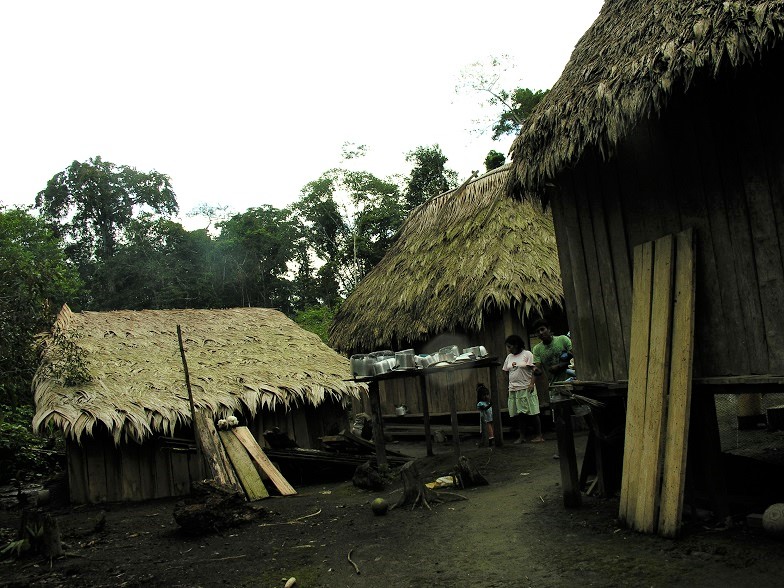
As vegetarians, we subsisted mainly on cassava and papaya, along with some oatmeal that we had brought with us, during the days that we stayed there. But the simplicity of the food was outweighed by the awe-inspiring surroundings.
We were constantly amazed by the sight of macaws flying overhead and in general by the feeling of being completely surrounded by nature.
The chief of the village (meaning the father of the family) was a shaman, so we got to experience an ayahuasca ceremony at night.
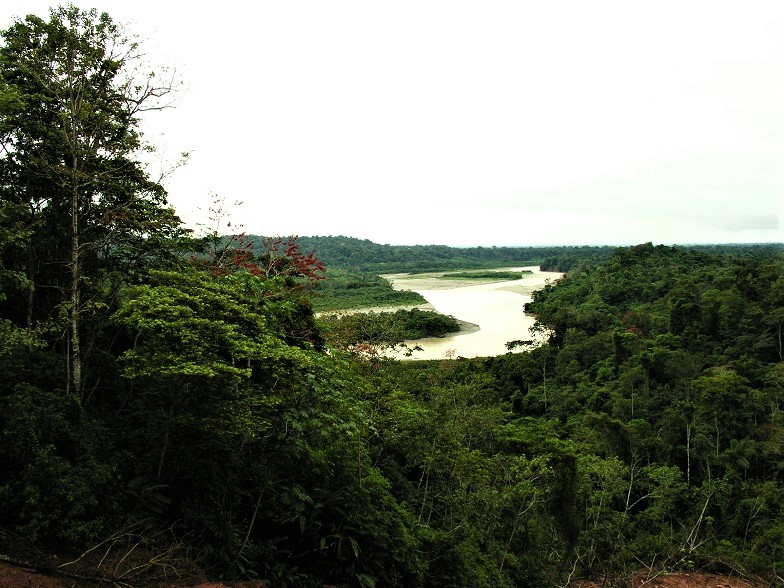
That was a great adventure. It gives you an idea of how remote the park is. Which means this is one of the best places in the world for really intimate encounters with nature.
Should You Hire a Tour to Visit the Manu National Park?
So, even though the area that we visited was officially part of the cultural area of the park, it was right at the border of the reserved area. Meaning it’s totally possible to go from Cusco to a remote area of Manu National Park by yourself.
But of course, it is much easier to visit Manu National Park by taking a tour with local guides for a more organized experience.
Basically, taking a tour is something you should do unless you are fluent in Spanish. Otherwise you will be totally uncommunicated.
But that’s not the only reason. Even though we had a big adventure in the jungle, we didn’t really get to experience some of the best things you can do in the Manu National Park.
So if you are looking for an adventure and an experience with local people it can work well. But in case you also want to try to spot big animals like jaguars, giant otters or cabypabaras, then I absolutely recommmend you to take a tour.
The tour guides are experts in the area and will take you to the places you have the most chances of seeing them. With them, you will also learn a lot about the local plants and their medicinal uses. Plus you willl walk around the jungle at night to try to see some nocturnal animals. You don’t risk getting lost in the jungle either.
Recommended tours to the Manu National Park departing from Cusco
Most tours generally last for 4 to 6 days, and they don’t stay just in one place like we did. They have different experiences and activities organized for the whole time.
Here are some of the best tours to both the buffer zones and the reserved areas, which have great reviews:
Best tours to the “buffer zone”:
4-day tour at Manu (great overview of the park, highly-rated)
Another 4-day tour (also great reviews, they cater for vegans as well)
Best tour to the “reserved area”:
Manu National Park 6 days (you go much deeper into the park)
Birdwatching tours:
4-day birdwatching tour at the buffer zone
7-day birdwatching tour inside the reserved area
Final Thoughts
The Amazon is one of the most magical places in Peru, so you shouldn’t miss it if you have the chance.

